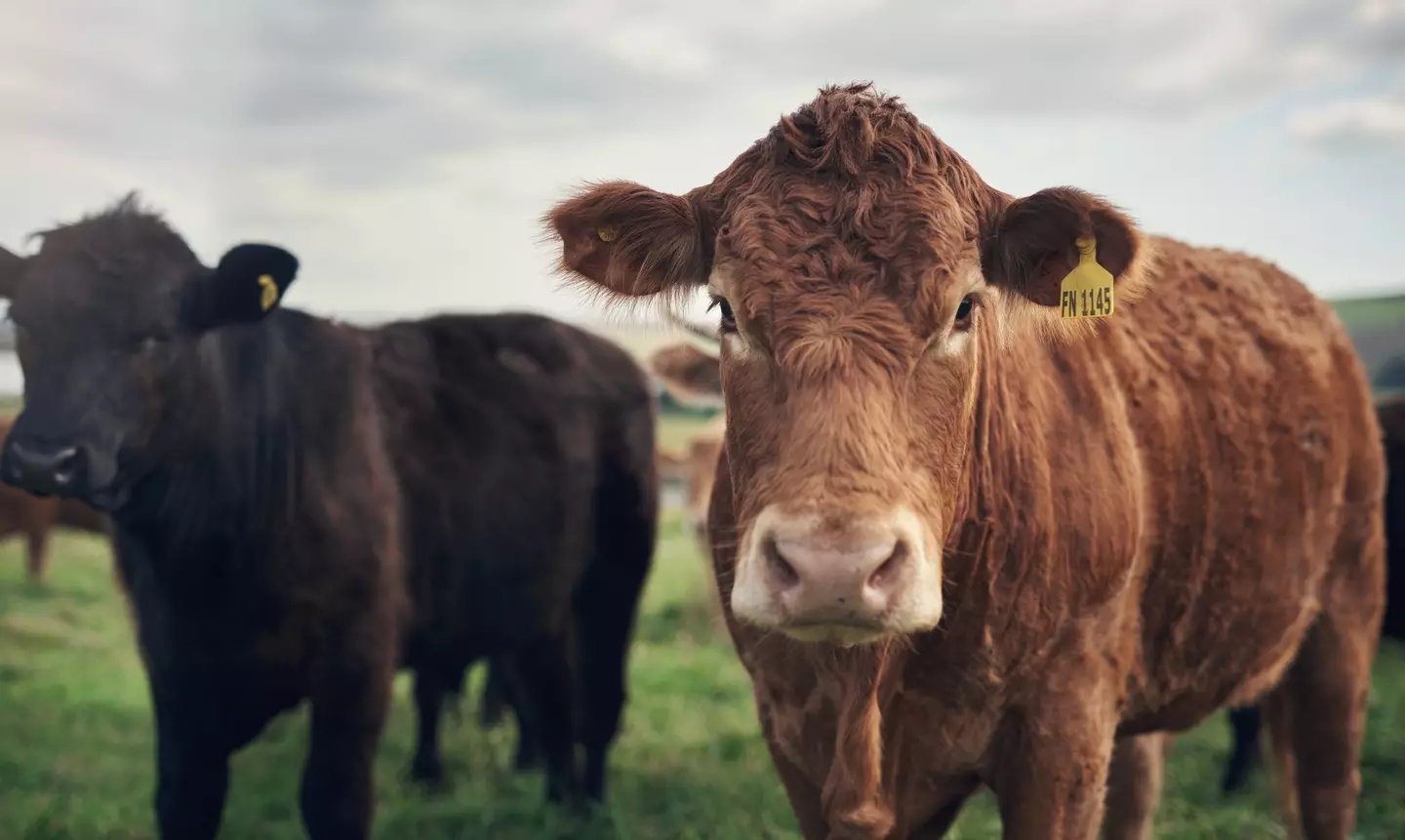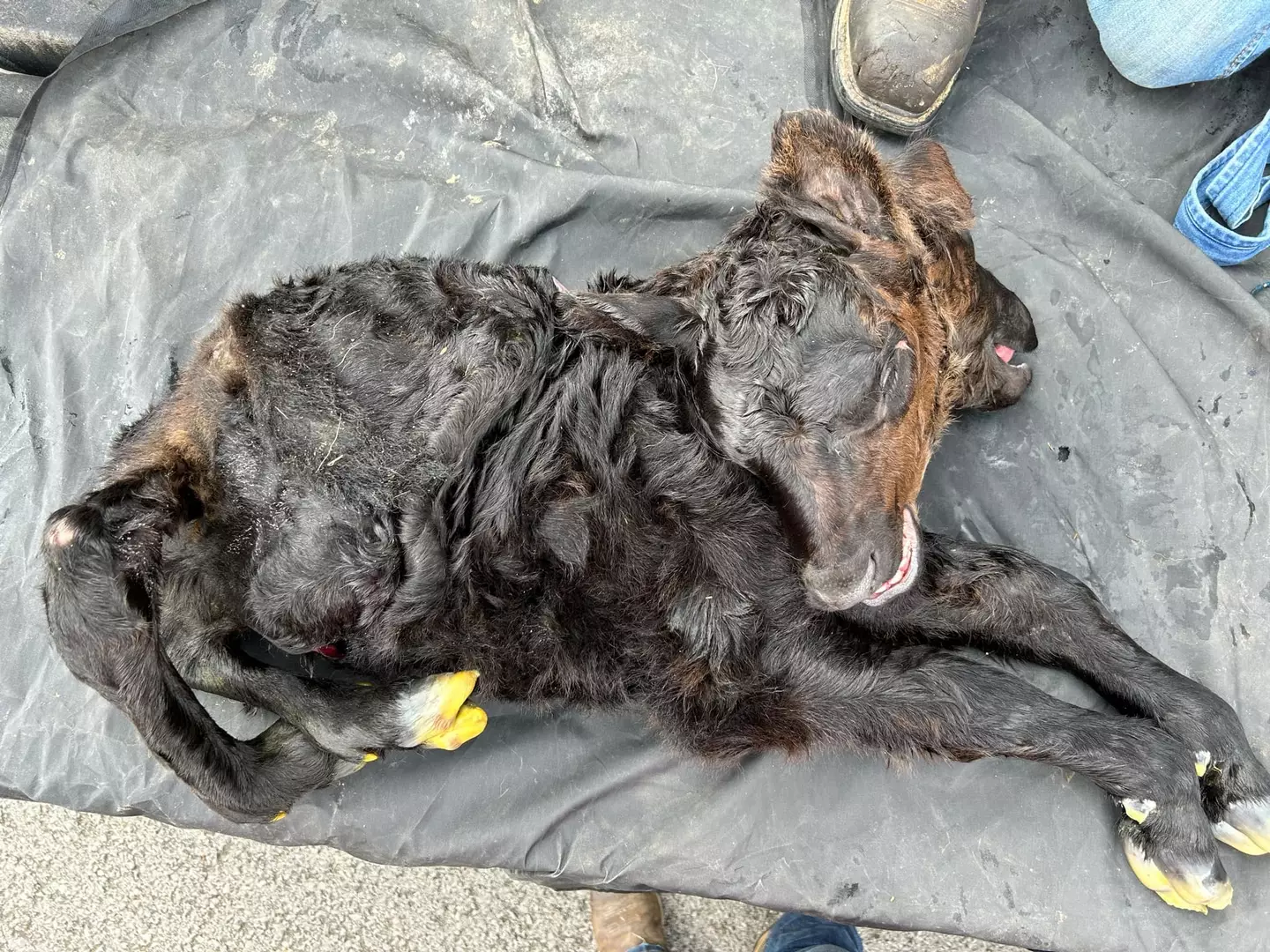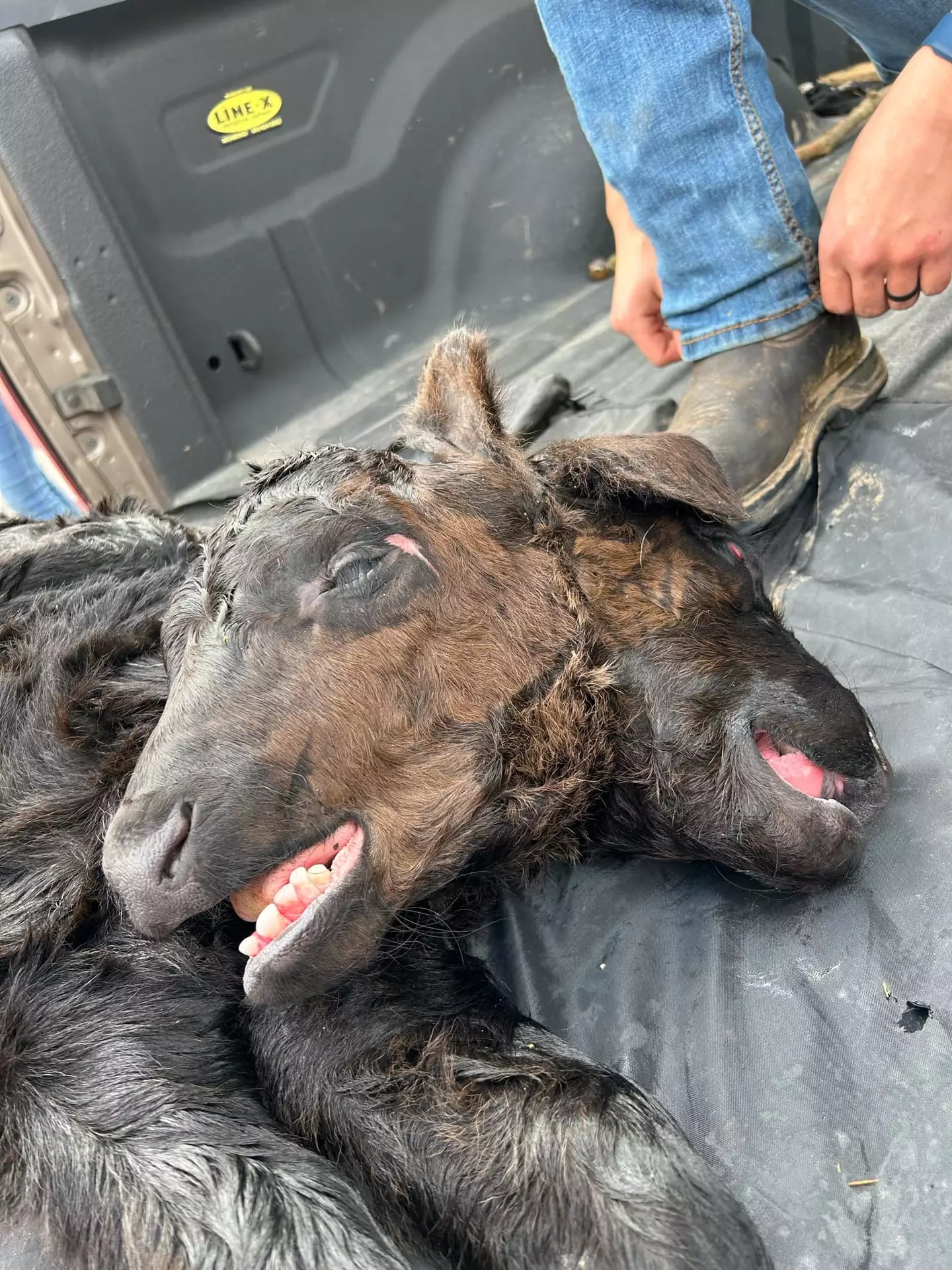Warning: This article contains images of a deceased animal which may be distressing to some readers.
A cow born in Kentucky with two heads has left farmers baffled.
While it’s known that certain abnormalities can arise during fetal development, witnessing the birth of an animal with such a rare anomaly is quite unexpected.
Recently, a family in the United States was taken aback by the birth of a cow exhibiting this rare phenomenon.

In cases similar to this one, involving the genetic mutation known as polycephaly, such animals often do not survive long after birth.
The term polycephaly is derived from Greek, with ‘Poly’ meaning many and ‘Kephalē’ meaning head, describing organisms with multiple heads.
Dr. Alaina Macdonald explained to Huron County Museum: “Anything that disrupts that delicate timing of gene expression (including random chance) can cause abnormalities in embryonic development.”
This mutation is not passed down genetically but occurs as a random anomaly during development.
Macdonald noted that “polycephalic animals often don’t live long enough to reproduce.”
The calf, part of the Tarter family in Edmonson County, Kentucky, was born with four eyes, four ears, two mouths, and two noses.

According to agricultural student Cassie Tater, at just a one in 400 million chance, the birth of such a calf is exceedingly rare.
Cassie, aged 20, described the calf: “He had two heads, four ears, four eyes, two noses, two mouths, and two tongues.
“He was very short-backed but he also had his spine inverted into his chest cavity. His back legs were deformed and he had a very short tail.”
Despite her surprise, Cassie recalled hearing of other such occurrences in animals.
She mentioned: “We had a pig like this years ago but I wasn’t born at the time.”
Animals with this condition typically suffer from numerous health issues due to their genetic and physical characteristics, and this calf was no exception, passing away shortly after birth.
In addition to its curved spine, the calf also had a cleft palate, an underdeveloped rectum, and arthrogryposis affecting its legs.

Cassie explained: “I had to have it to bring to my class at Western Kentucky University in Bowling Green. I learned that there are two ways this can happen: one is DNA RNA replication, another is it being twins that stopped growing and started to be ‘absorbed’.
“We did an autopsy on him in my physiology and reproduction class and found out his organs were perfect for just one calf so it wasn’t a twin that stopped growing.”
While the calf did not survive, the mother cow reportedly remained in good health.
Despite the unfortunate outcome, Cassie feels there was a positive aspect to the event.
Cassie reflected: “It was a bit of both because we did end up turning it into a learning experience. So I got that out of it, and so did everybody else.”

